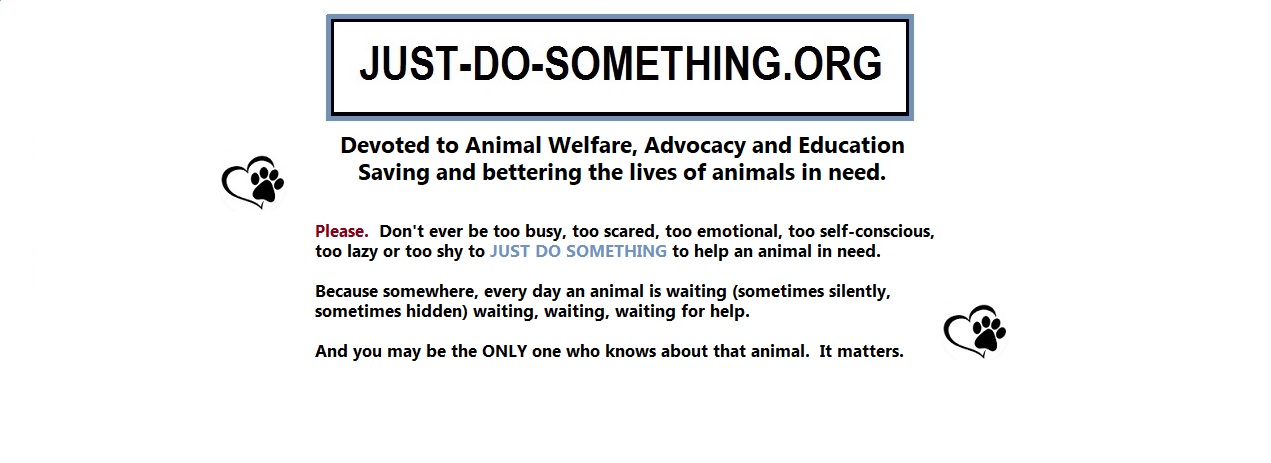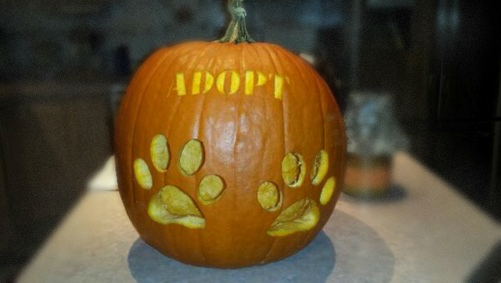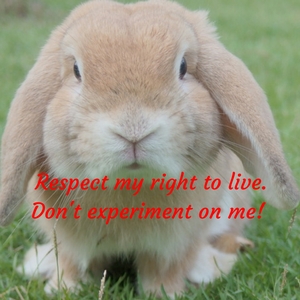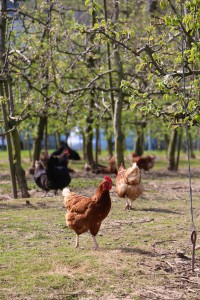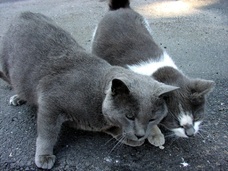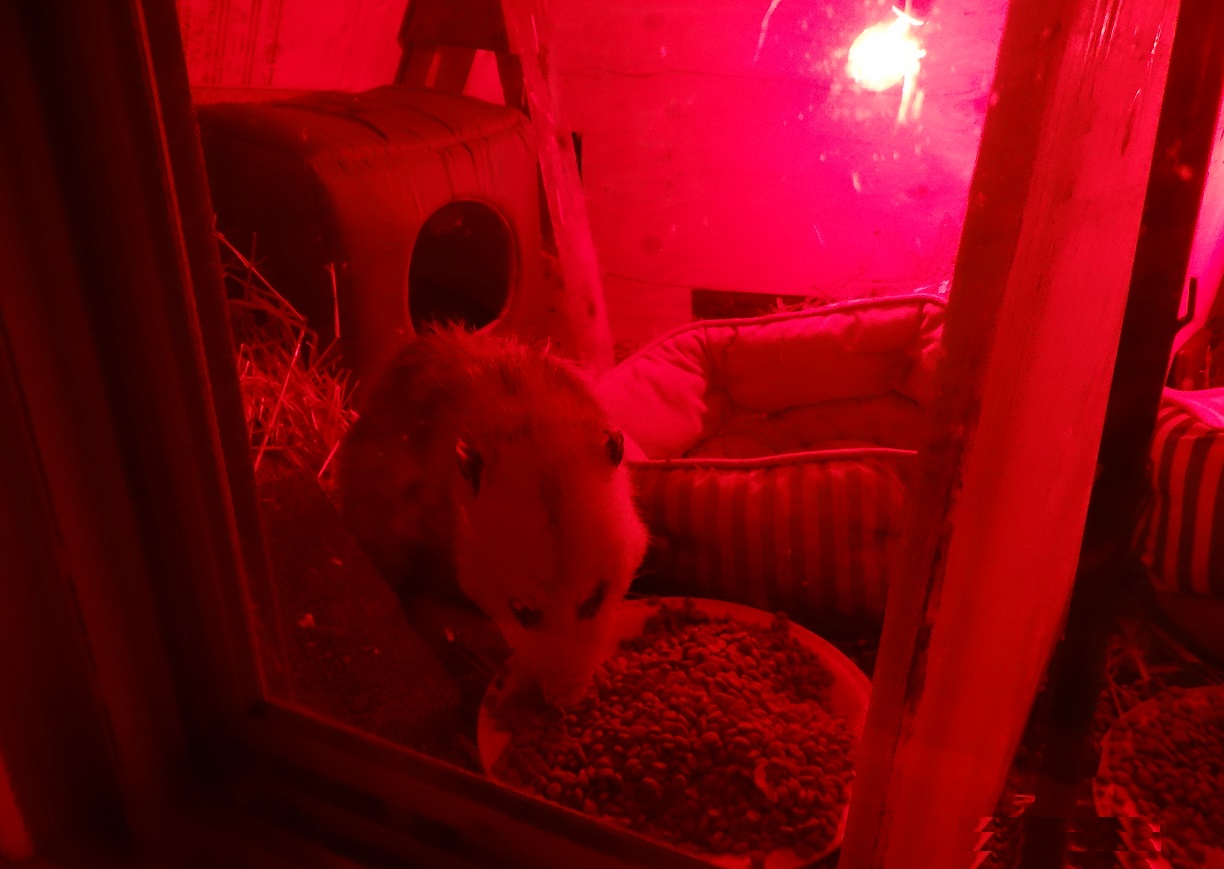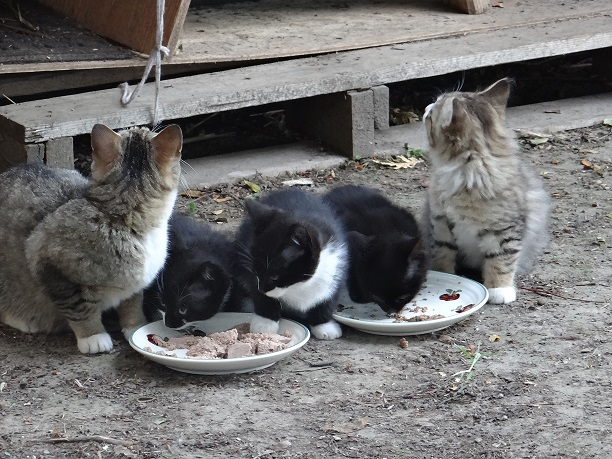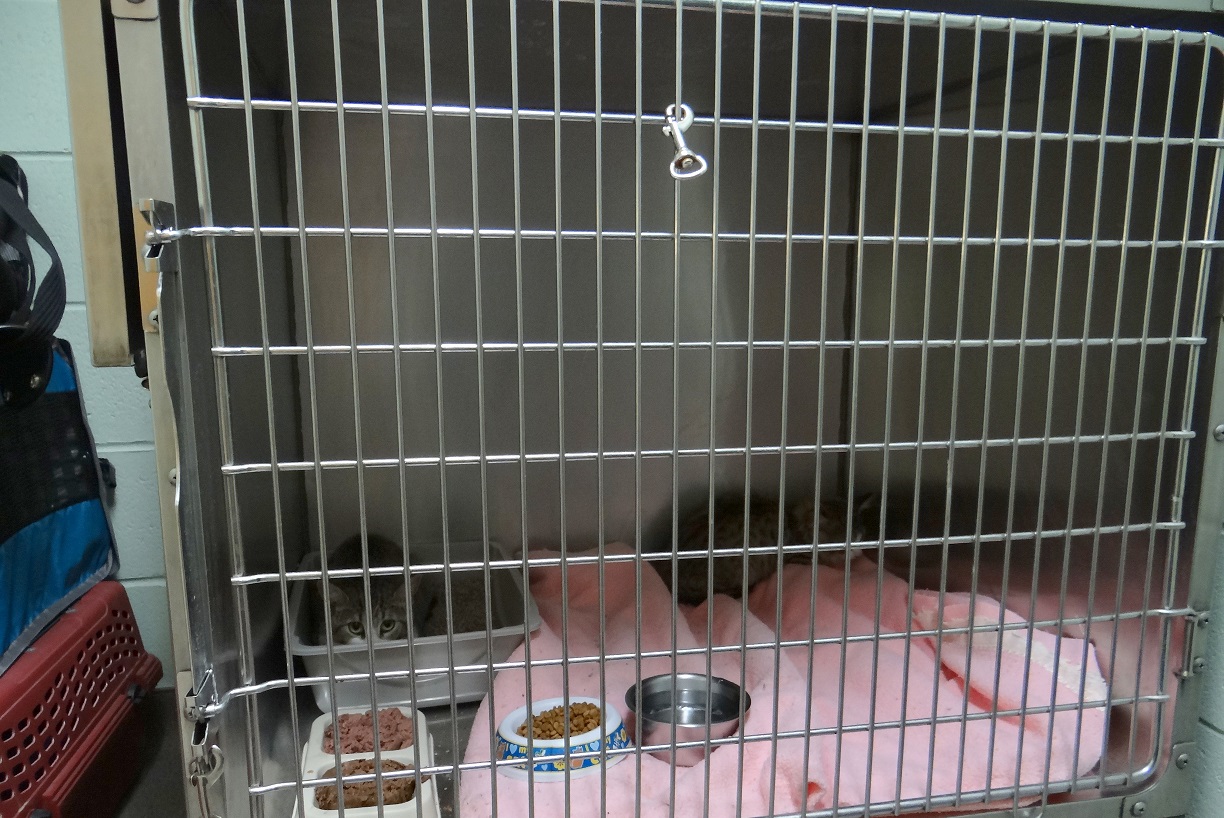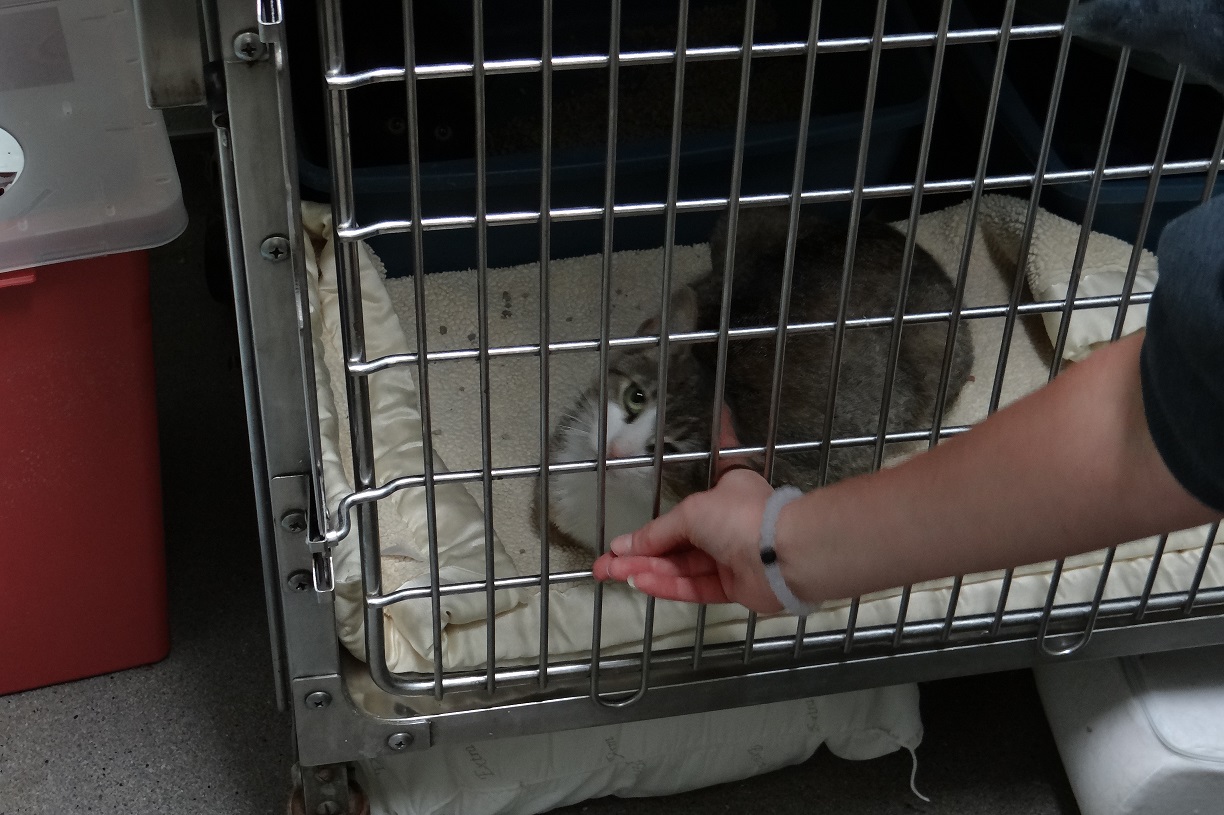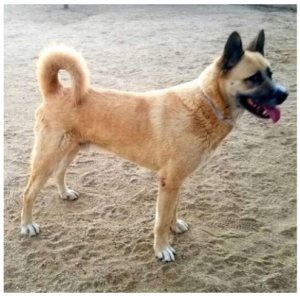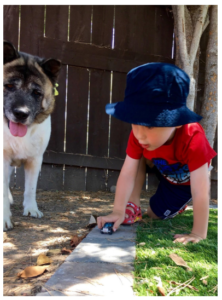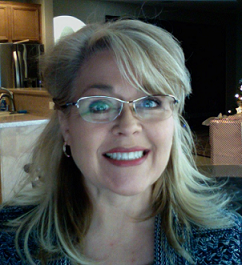
There are many specific dates that are chosen to celebrate and bring awareness to many specific animals. Most of the time, many of us will take a moment to share the date out in support of that animal – and that’s a great thing. But there are others who may take note of the date, and do nothing. Sometimes it’s simply because the date to celebrate is meaningless unless a person has knowledge of why an animal is commemorated and/or because they have had no real experience with that animal that strikes a chord.
At just-do-something.org, we celebrate (and advocate) for ALL animals. However, for us, National Feral Cat Day hits home so much closer than it ever did, and here’s why.
Meet Josie.
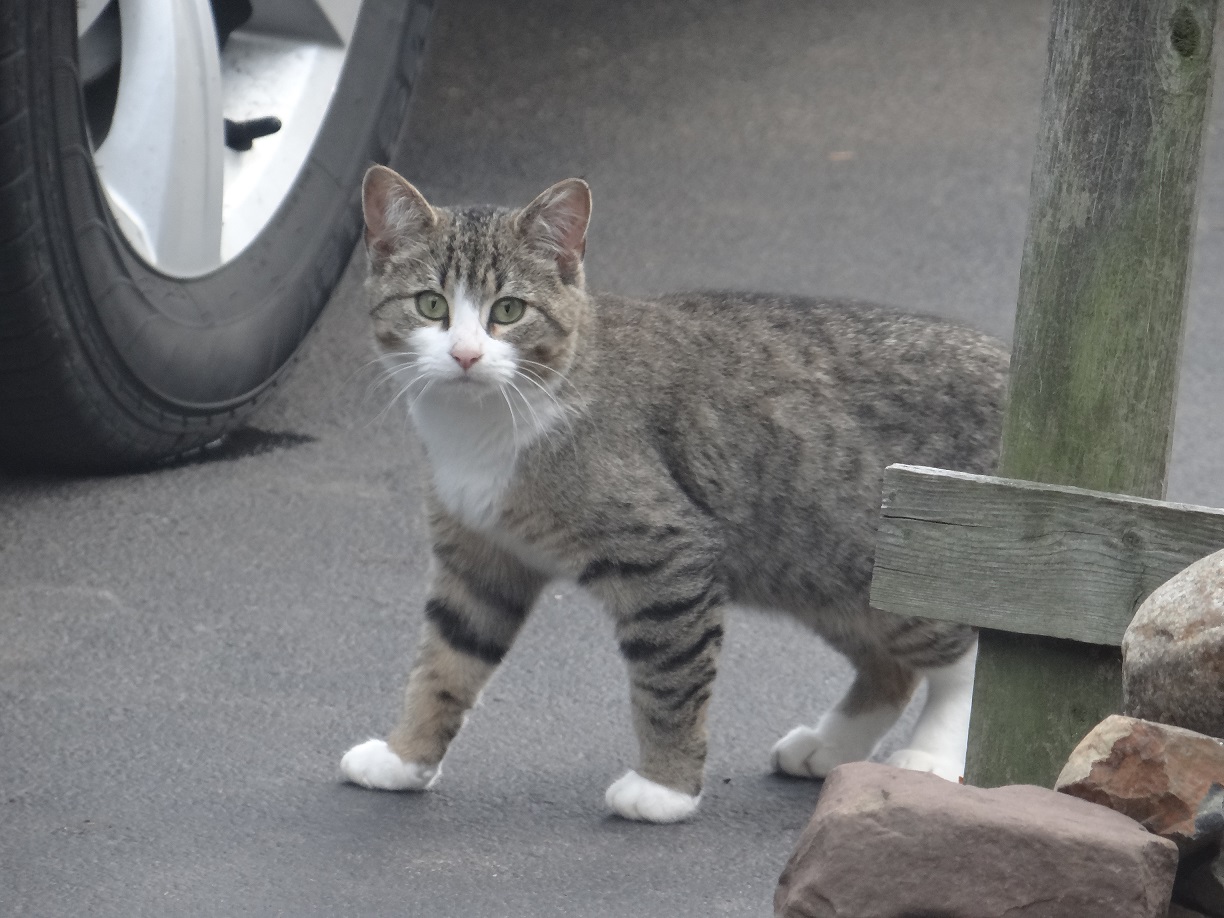
Josie wasn’t always called Josie. In fact, for the longest time we didn’t even know Josie was a female. Initially, when she first started hanging around our property (October 2015), we thought she was just passing through. Until the first snow hit, and we found her one night, on the side of our house, eating the birdseed we put out on the ground. Alarmed that this cat was hungry enough to eat birdseed, I made a few calls to find out what we should do, if anything.
The thing about getting help for a feral (or stray) cat in our town is that we, like many other places, are inundated with them. We have a few well known cat colonies, and a ton of local resources to call, but everyone is so busy that it can be difficult to get resource help right away. We had to rely more on Animal Control, our private veterinarian and related websites for guidance until someone from the cat community could call us back.
We were told that if a cat is eating birdseed, s/he is hungry and probably does not have any other reliable food source (from a human). This means that if s/he isn’t being fed anyplace else, that s/he probably does not have a permanent home.
We were also told that if we stopped putting out the birdseed, the cat would most likely go somewhere else to find food, and if s/he wasn’t able to find another food source (or a place for shelter), it would most likely not survive the upcoming winter season.
That greatly saddened me. The idea of any animal going hungry and/or being uncomfortable/unsafe distressed me. So even though I am highly allergic to cats (the allergy affects my throat and tongue, and causes wheezing), sadness turned into motivation – and my husband and I went to work.
We built a cat house out of wood, weather-proofed it, added carpeting and heat lamps, two kinds of comfy cat beds and a shallow dish for cat food. We set the cat house up so that one side had an opening against a ground window in our home – this way, during the snowy weather, we just had to open the window to add fresh cat food right into the cat house, plus we could keep an eye on her if we needed to. For water, every winter we place a few heated bird baths outside to ensure birds have access to water – and we already observed the cat drinking from it.

Our Homemade Dual Compartment Cat House
It didn’t take long for Josie to find her new home. Every morning she came to eat, and every evening, she came to sleep.
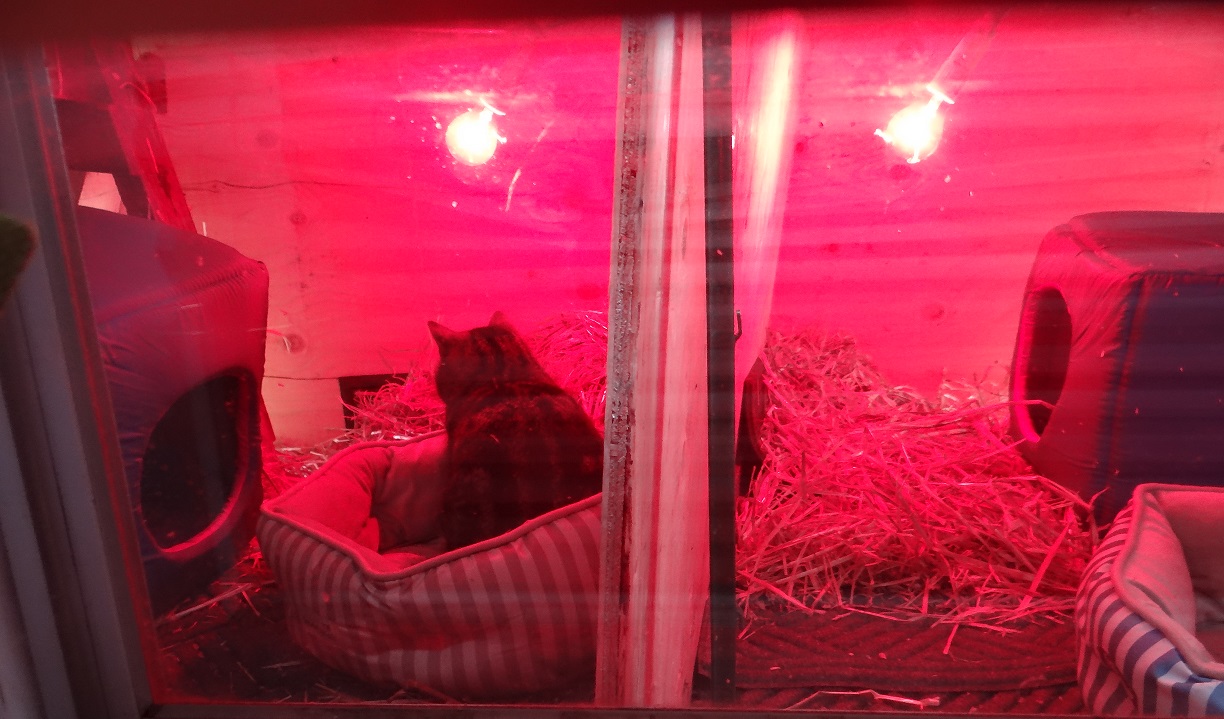
It also didn’t take long for two more cats to show up (a tiger-striped female and a huge Black male). It was clear that these additional two cats also were without a permanent home.
Within a few days, we had three cats fighting for food, and the cat house.
Along with the nighttime fights (cats fight LOUD), I was immediately worried about a few things: 1) more cats coming, 2) the current three cats not getting enough to eat or rest because they were fighting, and 3) our neighbors taking notice and calling Animal Control to come and get them.
My worries were unfounded.
- No more cats came that winter. The most dominant cat (male) would only come sporadically after the initial sighting, and never slept in the cat house.
- Josie and the other cat eventually worked out their own eating schedule. My husband and I “remodeled” the cat house so that there were now two separate compartments – one for Josie and one for the other female cat who started hanging around.
- Neighbors were curious but supportive, and Animal Control stated they would not come for a feral or stray cat because there were just too many of them.
My husband and I set up a wildlife cam, so we could track the cats and find out more about their habits.
We took pictures, and passed out the information to our neighborhood and to local Lost & Found groups, in the hopes that someone was familiar with these cats.
By this time, one local Feral Cat Colony “specialist” called me back. The call was not supportive at all. Instead of giving us ideas on what we could do to take care of the cats through the winter, and then provide guidance on helping us trap them for spaying/neutering in the Spring, I was accused of not doing a good thing because I wasn’t planning on trapping them in the winter and taking care of the spaying/neutering right then.
I explained about my allergy, and how I would not be able to care for convalescing post-surgical cats in the winter because I could not bring them indoors. I explained that we did plan to take care of spaying/neutering in the warmer weather (we had already spoken to our vet about that), and that we would be paying for this expense ourselves because we felt it was the right thing to do. I also explained that I had been calling around town for the past few months, trying to find someone who might be able to care for the cats through the winter, and give them a temporary home so they could be spayed and neutered now, to no avail.
Not good enough, I was told. That call left me very upset, but I got over that, and we decided to do the best we could do with my allergy limitations and lack of assistance from our town. Within a few weeks, two other cat resources call us back. I was assured that I was doing a great job of planning for them over the winter and in looking ahead to get them vetted in the Spring.
Through the winter, both cats came and went – Josie was like clockwork. Every morning before I went to work, she was on the side of the house, standing on the walkway, waiting for food. If I walked too fast towards her, she would run and hide. When I refreshed the bird bath, she would run and hide. Any kind of movement from anyone caused her to run and hide. But she always came back, every morning and every night.
After a while, when the worst of the snow was gone, the second female cat appeared less and less, until we stopped seeing her around completely (we have not seen her since).
But we had new visitors now with the warmer weather starting: possums and raccoons.
It didn’t take long for the two possums, three raccoons and Josie to adjust to each other. Everyone was content to eat and drink in the same spot. The only one who hung around after eating was Josie. The possums and raccoons left after they had their fill.
My husband and I enjoy bird watching, and that is no different around our home. But, after catching Josie in the act of killing a few birds on the side of the house, we opted to stop feeding the birds when Spring came. That took some getting used to – both for us, and for the birds – some of which have been around our feed stations for a long time!
After a few weeks, Josie figured out which house door I would come and go from. It wasn’t long before she started meeting me at the front door, waiting patiently while I filled her food dish there, and then with her leading the way, allowed me to follow her to the cat house to put the food down. This became our morning and evening ritual. I had been so routine in her morning feedings (because of my weekday work schedule), that this meant no sleeping in on weekends, because Josie would be waiting for her breakfast by 5 AM, EVERY morning. And actually, I was happy to do it.
By this time, we had never been closer together than three feet, but it was clear to everyone that Josie was beginning to feel most comfortable around me. No more running! She started greeting me when I pulled into our driveway after work. I made it a habit to talk to her every time I was outside, whether I saw her or not. Sometimes I used a silly voice to call out to her, “Hey kitteeeeeee”. But now she was responding. Every time I called to her, she would pop out from under a tree, or from her cat house, and walk with me to the garage to grab her food, and then back to the cat house, where I placed it. And many times, she would greet me when I called to her, even when it wasn’t feeding time.
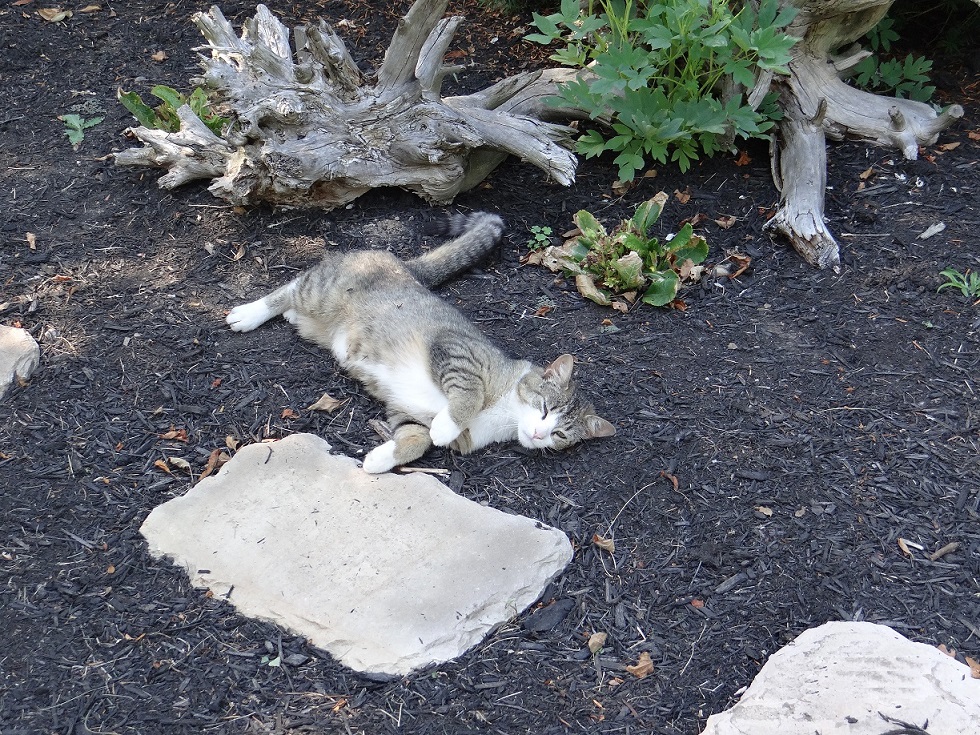
Josie, waiting for me to get out of my car after work.
This also meant that I could now sit in the yard near her, and she was content to lie near her cat house while I cleaned up the area next to her (cleaning up consisted of making sure food and water bowls were always clean, and the area was free of natural debris. Josie (and now the possums and raccoons) were very clean eaters, and Josie voided in other places besides this area, so there was nothing to pick up). I was also now “allowed” to hang out next to her while she ate. Progress!
When it was apparent the snow was gone for good, we dismantled the cat house, and moved it away from the window on the same side of the house. We left the front of it open, with the same set up for heat, carpeting, beds and food, only now it was an “open concept” – so we could still see what was going on, things would be airy for the warmer months to come, but there would be plenty of shelter from rain and sun. We made sure there were separations between areas in the event either of the other two cats came back. The raccoons and possums moved on by this time.
Josie took to it immediately, her favorite spots either lying on the deck we made, in the sunshine, or perched inside her home on a cement block that became one of her view points. She soon started spending more time on the side of our house, spending lazy days in the grass, or stretched out in a patch of Spring sunlight.
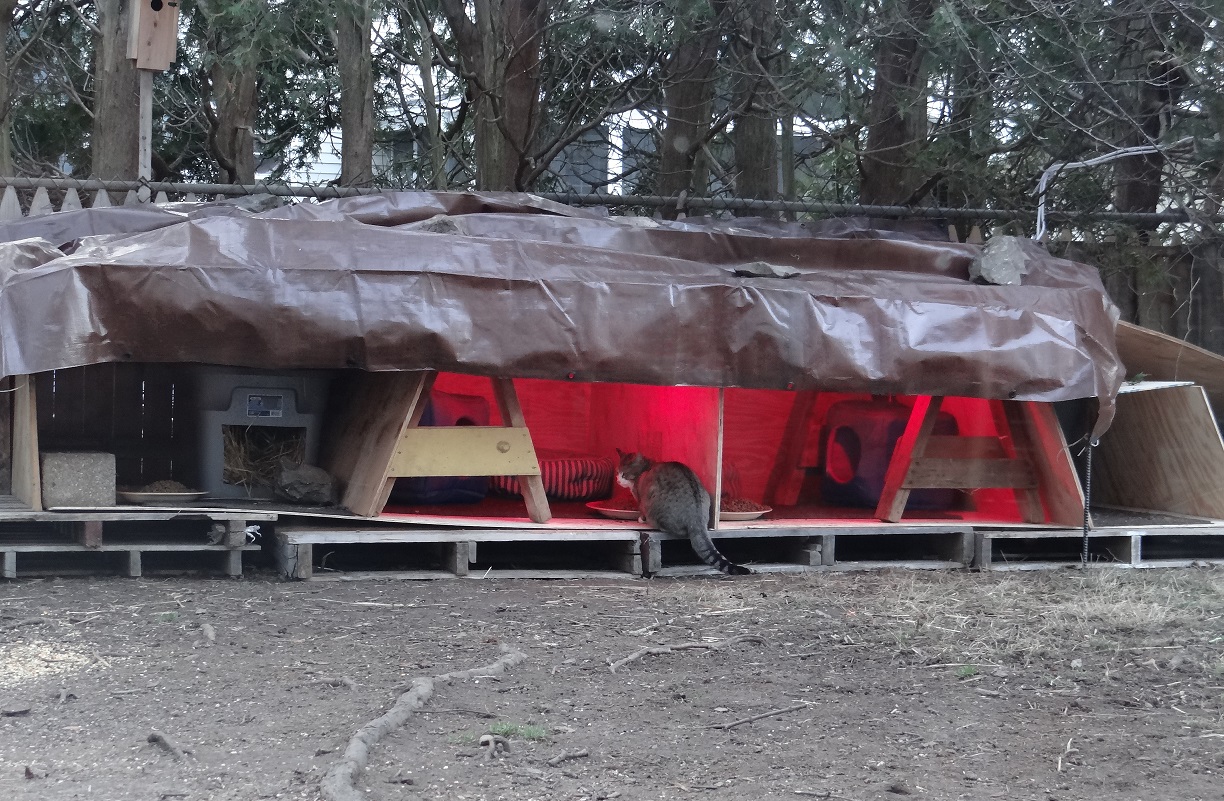
So now with the coming of the warmer weather, we made plans to get her to our vet for spaying and shots.
And as we were making plans to trap her, Josie disappeared.
I spent a lot of time driving around our area, looking for her, hoping that she didn’t get hit by a car. We still put her food out every day. I called to her and talked to her every time I was outside. After a few weeks, we talked about taking down the cat house, but I wasn’t ready to do that. I looked for her every day.
And then just like that – she was back. Only this time, she kept to the front of our house, under a large low pine tree, which was clean and dry underneath. She came to me every morning and every night just like before, only this time, wanting only to eat by this tree. If I put the food down by her cat house, it would go untouched.
This underside of this tree can be viewed from inside one of the windows in our house. Once a while you might glimpse a squirrel or bunny relaxing underneath, so image my surprise when one morning shortly after Josie returned, I saw four kittens. Now it made sense why Josie took up space under that tree and refused to eat anywhere but there.
So, Josie came back home with four kittens in tow. Uh oh.
After talking with our veterinarian, it was decided that, since the kittens were still so small, we would continue to keep them together our property, and try to trap them as a family when they got a little older.
Keeping them together was easy, because after a week, Josie moved everyone into the cat house, where there was food, water, safety, quiet, and room to play and explore while never leaving the side of our house. We spent hours watching the kittens play, discover climbing trees and bouncing on leaves, rough-housing with their Mama and napping together.
During this time, our veterinarian received regular updates from us, and came over a few times to check on the family and figure out the best way to try to trap them.
I’d like to talk about our veterinarian for a moment. Leanna Hawkins, DVM, has been our family vet even before we adopted our rescue dog, Jessie. Her compassion is parallel to her expertise, and I would, and have, placed my dog’s life in her hands. Leanna didn’t have to come to our home to check on Josie and her new family, but she did. She didn’t have to help us trap and care for them, but she did. She didn’t have to keep the family with her at the clinic, but she did. In fact, Leanna didn’t have to do any of the things that she did to help us get this family off to a better start, but she did. Leanna has heard us say “Thank You” a thousand times – here’s one more, thank you, Leanna.
I started to sit outside with Josie and her family every day, so that the kittens started to get used to the presence of a human. Josie seemed okay with that; she watched from the cat house deck while I played with the kittens using a cat-toy wand.
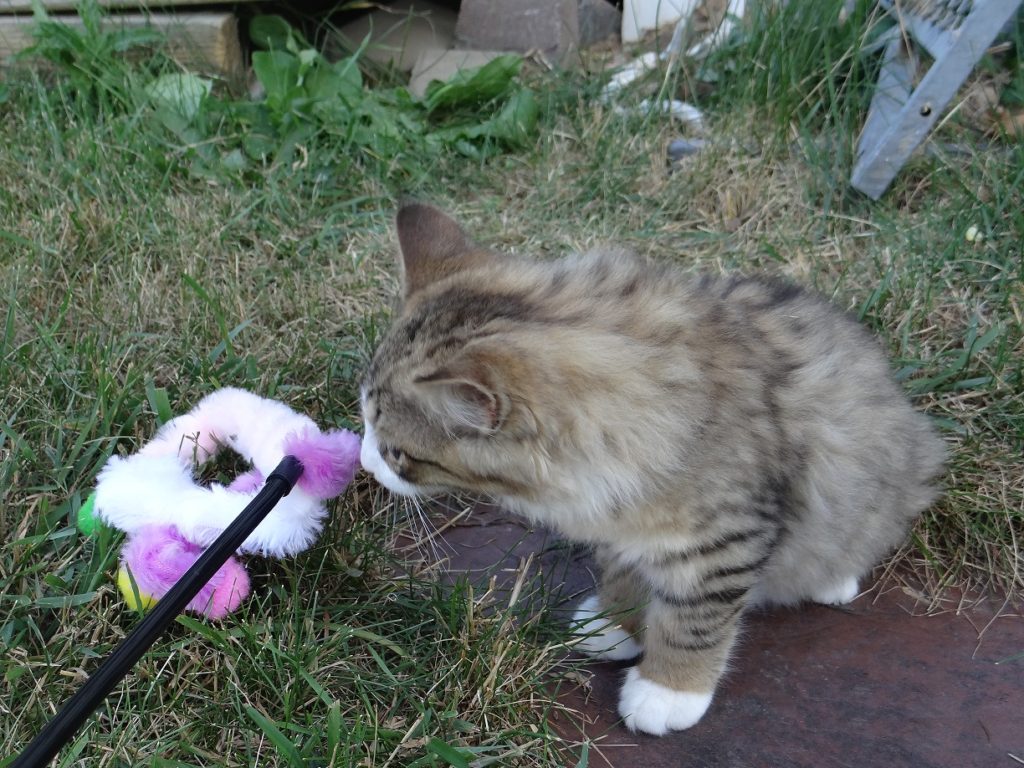
Getting braver every time!
And then, just like before, when it was time to trap everyone, Josie took her kittens and moved them. It was awful not knowing what happened.
After three days, I spotted Josie in the neighborhood and followed her. She had moved her family under a neighbor’s deck. Even though Josie had been diligent in providing for the kittens (the neighbor watched her bring mice, chipmunks and squirrel to her kittens), by the time we found them, they were clearly hungry. We continued to feed them at the neighbor’s, and by now the whole family would come up together on the deck when I brought the food.
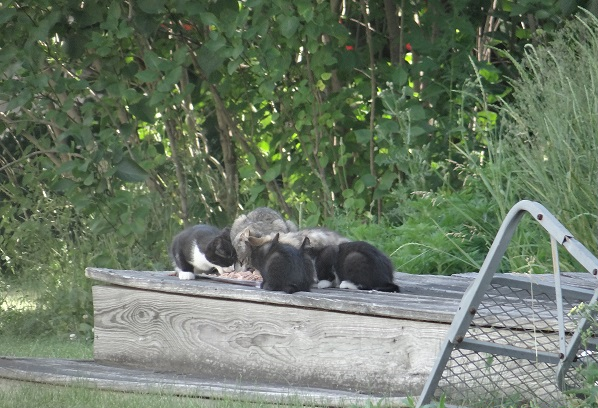
Eating Breakfast at the Neighbor’s Deck
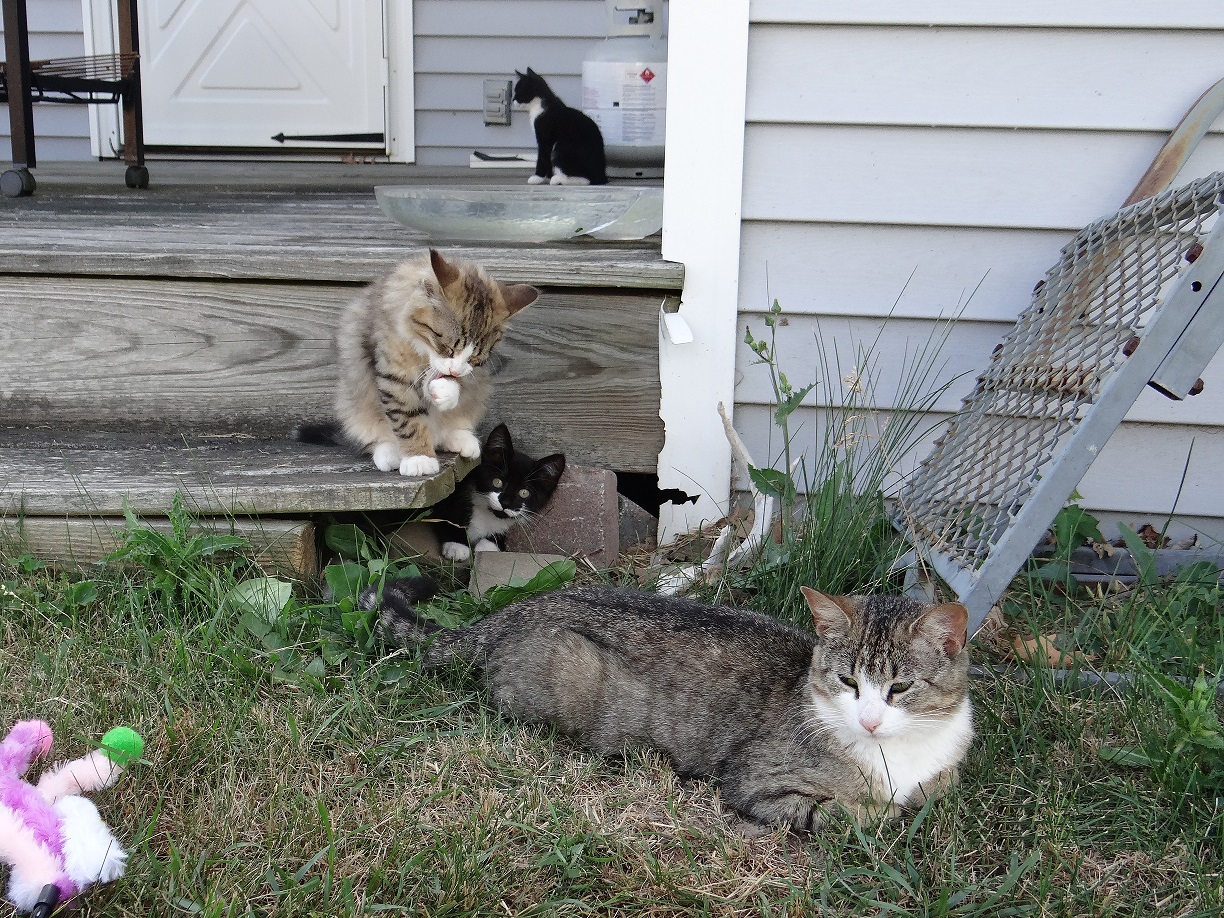
Relaxing after dinner at the neighbor’s deck.
We knew we had to greatly ramp up our trapping efforts. Through the volume of postings we were sharing about this cat family to try to get some assistance, we met a lovely woman named Jackie D., who has experience working with feral and stray cats. She brought over some Have-A-Heart traps and offered us some tips on how to go about trapping everyone. Our neighbors were wonderful. They gave up full reign of their property, and allowed us the freedom to do whatever we needed to to continue to look after everyone. This included setting up the Have-A-Heart traps, and early morning walks on their lawn for breakfast.
Soon, Josie moved her family back to the cat house, but only for a short time. From there, Josie moved them clear across and out of our neighborhood to a different neighborhood. I found out when someone saw one of the fliers I had put up about the missing family, and she called me to let me know that they had been in her yard – but then were gone again.
Josie was now living with her kittens in a different neighborhood, under a group of trees on an open lot. The property owners allowed us to set up a makeshift traps (they were too smart for the Have-A-Hearts), but they became frustrated and impatient when we could not trap everyone at the same time.
It took about three weeks to trap Josie and three of her kittens (at different times), using a dog crate that could be closed by tying yarn to the handle. A little wet cat food in the crate, and a pull of the yarn to close the kennel door was all it took. Each time, they were taken to our vet clinic, and kept in a room away from all the other animals, so they could become accustomed to their new surroundings with as little stress as possible.
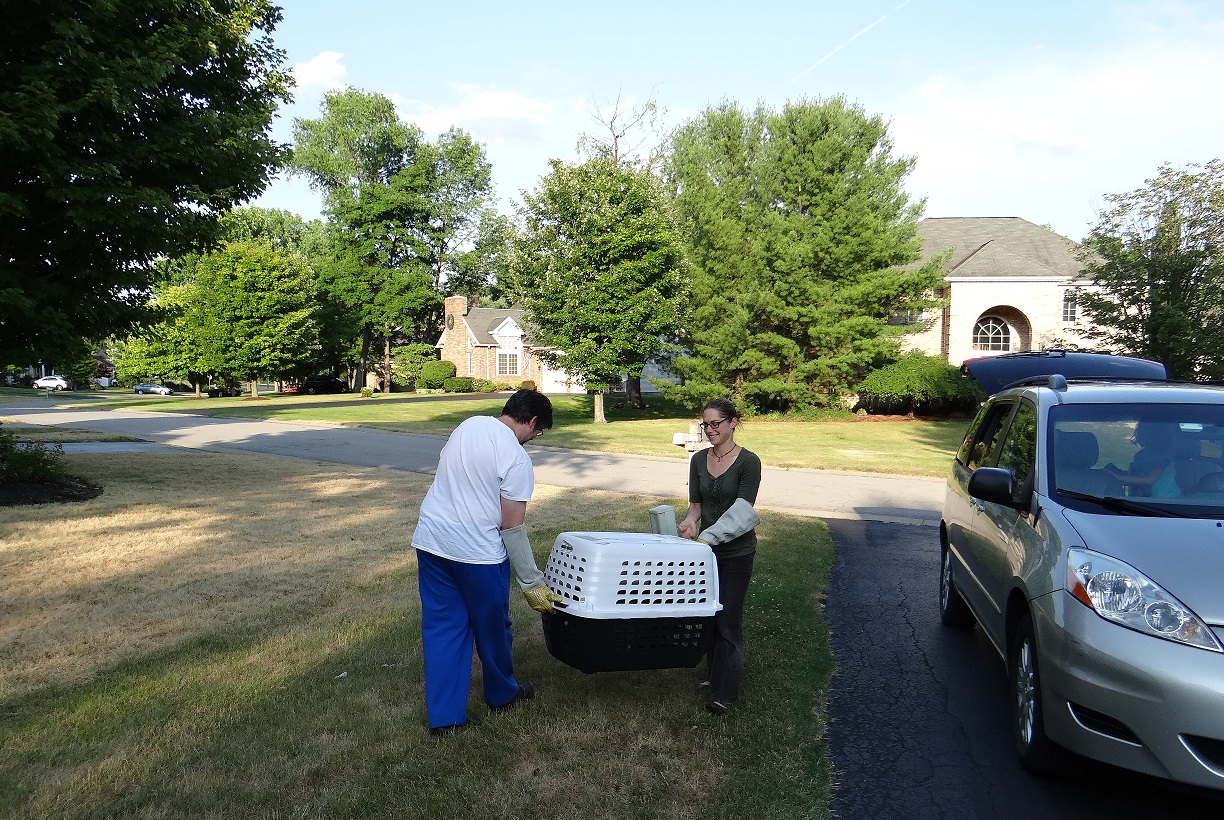
Success! Mama and one of her kittens on the way to the vets, after successfully trapping them!
We were still in the process of trying to trap the last kitten when the property owners stated that he had had enough, and asked us to leave their property. When I explained that we could not just leave a kitten out there all alone, his reply was, “well, three out of four ain’t bad”. Some people suck.
It took an additional two weeks, but finally we were able to trap the last kitten (by putting food out on a neighboring property). We would only put out food each morning, so that by the next morning, kitty would be hungry. Every morning for that two weeks, my husband and I got up at 5 AM, drove to the property, and hid behind a tree with that yarn, ready to pull the kennel door shut. When we finally caught the last kitten, I cried.
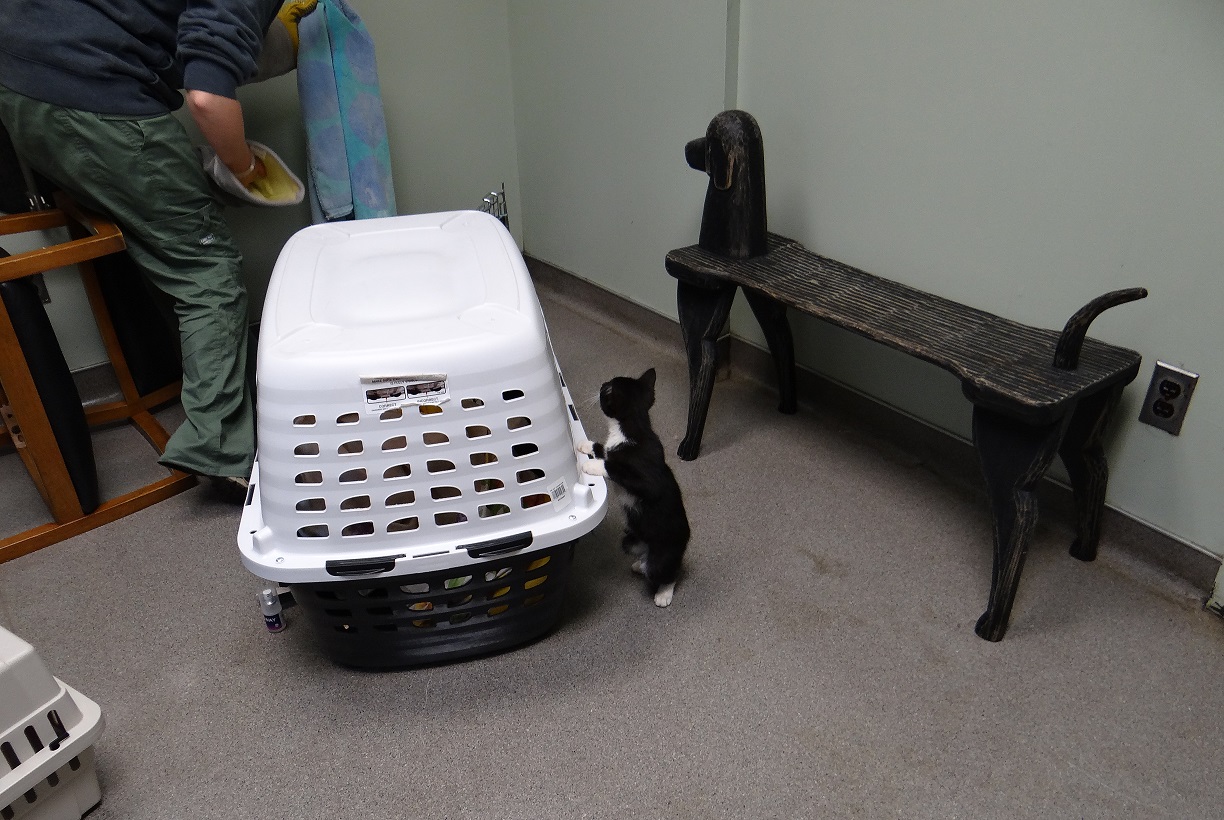
We let the last kitten out at the vet’s office, hoping to get her into a smaller crate. We got there!
Life on the streets is hectic and scary for any animal. I am sure that it’s the same thing for street animals that are suddenly thrust into a human environment. I worried about the stress level of Josie and her family at the vet’s office, but I knew everything we were doing was for their very best interest.
At the vet’s Josie was given a full examination, and all required vaccinations. It was determined that Josie was about one year old. She weighed six pounds. The kittens were too skittish and angry to touch at first, but with a little time, each one was examined. All were de-wormed. In fact, except for having worms, everyone was healthy and in very good shape; good teeth, no fleas, ticks, ear mites or infections. Best of all – no Feline Leukemia.
Josie quickly acclimated to a human touch, and soon was purring whenever Leanna picked her up to pet her.
I tried a few times to go into the room where Josie and her kittens were. I wanted to hold each one, especially Josie. But my allergies didn’t allow for that. I did get to pet Josie though – the hives were totally worth it.
Within the first two weeks of being there, the first kitten was adopted out. Within two more weeks, a second kitten was adopted out. I did not charge adoption fees to anyone. Instead, each adopter agreed to have their new family member spayed or neutered immediately, with all required shots, with a promise never to declaw them. And of course, they had to send me picture updates on occasion.

Disappointingly, the adopter of the Black kitten failed to follow through on her promise to have the kitten vetted and spayed within the agreed amount time-frame, despite my asking repeatedly for an update on that. To-date, this has not been done. I even made arrangements with a local clinic to have the kitten vetted and spayed at a considerably reduced cost as a favor to me – the adopter’s response to that was to break off communication with me (you’re welcome). In speaking with two clinic mentors about this situation, I was told that I could request return of the kitten. However, I was also told that since the kitten is being cared for in a good environment, it was important to remember that. And that not every cat owner makes the decision to spay, which both clinics agreed was a poor decision. In the county where we live, the law requires cats older than four months to have their Rabies shot; I was also told that I could turn her into the town for lack of compliance on this issue. I made the decision not to do anything about this unfortunate situation in the hopes that soon I will receive a call that the kitten has been spayed and vetted, as promised.
This is a good time to mention the importance of following up on ALL aspects of pet care as being part of responsible pet ownership – spaying/neutering and being up to date on all shots are for the health and welfare of the animal. Thousands of animals suffer and die every year because people don’t take the time spay or neuter their pets. Pregnancies result in over-population, period. There are too many strays and ferals RIGHT NOW, struggling to stay alive, providing for their families without the benefit of a real home. No real home means no reliable food, water or shelter source. Starvation is a horrible, slow way to die. Overpopulation leads to shelter drop-offs, which result in euthanasia. Preventing unwanted births is a must for anyone who has a pet, or comes to the aid of an animal in need. You may think your pet will never get lost or run of your house, but it happens a lot, and it’s the animal that suffers. Anyone who feels that they cannot take care of these basic pet ownership responsibilities should not have a pet. With so much knowledge and so many resources available to help meet these goals, shame on anyone who doesn’t step up. Again, some people suck.
Soon we needed to get Josie and her remaining kittens out of the clinic. We made arrangements with Jackie for her to take them home on a temporary capacity so they could get out of the vet environment and into a home. It was then that we discovered that Josie was pregnant again, with three kittens on the way. Our best guess is that Josie became pregnant again while we were trying to trap her.
On Labor Day, Josie gave birth to three healthy kittens. This time she had her kittens in a home, in a safe and quiet environment. Josie will stay with these new kittens until they are fully weaned (about two months), then Josie will be spayed, and the kittens will go to a rescue group that Leanna found, to be adopted out.
The two kittens from Josie’s first litter are still with Jackie. As is Josie. We hope to have them adopted before winter, as Jackie already has permanent pets at her place. Until we get these last two kittens and Josie adopted, Jackie would not be able to be a savior for another cat family in need.
It’s important for me to acknowledge Jackie, and all the wonderful people just like her. Without “Jackie’s” in the world, many animals would not receive the care and consideration that every living being deserves, or gets a shot at. It takes patience, time, effort and even your own funds to sometimes be a champion for animals in need. Jackie didn’t hesitate to help in any way she could, has never complained about the situation (although I am sure that caring for a family of feral cats is hard enough without living your life and taking care of your own animals in between) and is truly concerned about the health and welfare of Josie and her family. A lot goes into being an animal advocate, sometimes this is more effort than other times. There are people who do the minimum, and there are people who jump in completely. How blessed Josie and her kittens are to have someone jump in wholly for them, even knowing what caring for them meant – that’s Jackie. Thank you, dear Jackie.
I think the kittens are adorable, but Josie has my heart. I think I fell in love with Josie from the minute I saw her eating that birdseed. If I could take her home with me, I would, but for me, that wouldn’t work too well. I receive routine updates from Jackie on how everyone is doing. I think about Josie every day, and honestly, I miss seeing her napping on the side of our house. The selfish part of me would like nothing more than to bring her back to that cat house, and have her live out her days as my outdoor cat.
But, after seeing her kill birds and other small animals just to live, and sitting alone in a cat house warmed only by heat lamps – well, I don’t think that’s any way to really live. Josie deserves an easier life, where she doesn’t have to sleep with one eye open, where she has her meals provided to her, and where she can enjoy the loving touch of someone who gets that she likes her ears scratched.
This is a long blog, longer than any other on our site (so far). But still, as long as this is, the process for getting to the end of my story was even longer. Words really don’t describe Josie’s story or our experience.
Ferals and strays have it HARD. Maybe Josie and her kittens would have done great without our help. Maybe not. But from that first moment of watching Josie each birdseed, nothing else mattered except helping her out. So we did.
We still keep a watch out for the other two cats. We think the large Black male is the father, as he came around after the kittens were born for a short time, and even ate with them a few times at dinner time. We kept the dog kennel, just in case we need to use it for trapping again.
We came into this situation not knowing a lot, and by the time we trapped Josie and her family, we were more knowledgeable, and more appreciative, about the life of a feral cat.
Our cat house was taken down the week after we trapped Josie’s last kitten. This past weekend it was put up again, for a business in the next town over, who has a family of stray cats that has been hanging around their property. We are already advising the business owner about ways to trap them to ensure their basic care.
If you live in Monroe County, New York, and you might be interested in adopting one of Josie’s kittens, or Josie herself, please let me know.
For more information on Feral and Stray Cats, please visit Alley Cat Allies.
If you have a feral or stray cat issue in Monroe County, New York, please reach out to us and we can put you in touch with some really great people who may be able to help.
The next time you see a lone cat wandering about, think twice before making up your mind that it truly belongs to someone. It might just be eating birdseed tonight.


